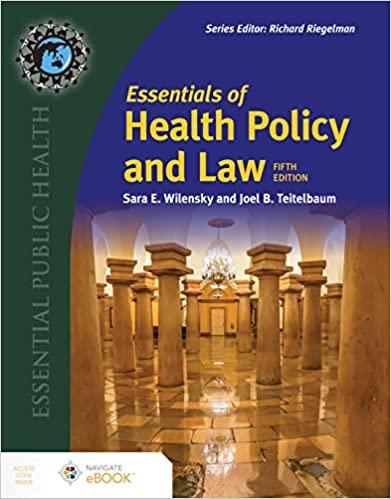Question
1. Flemings v. U.S. (100) In the year 2000 the Flemings purchased a large plot of land near a United States Air Force base inupstate
1.Flemings v. U.S. (100)
In the year 2000 the Flemings purchased a large plot of land near a United States Air Force base inupstate New York. They use the land to raise Holstein calves.Sometime shortly after the land purchase, the U.S. Air Force began flying training missions over the land.
In 2008, the Flemings entered into an agreement with Wind Power and Energy. The agreement gave Wind Power an exclusive option for an easement, into and on the Flemings' property, for " wind energy development and transmission."Wind Power hoped to eventually develop and use wind turbines.The agreement provided Wind Power with a five-year (the "option term"), renewable easement right.The contract also provided that, Wind Power could terminate the agreement for good cause without fee, upon giving the Flemings appropriate notice.
In mid-2010, employees of the Air Force on the nearby base told Wind Power that due to long-established regulations, the Federal Aviation Administration (FAA) would never issue an approval designation for the air space above the Flemings' land.The absence of such a designation would prevent construction of planned wind turbines because other regulatory agencies would never approve or provide construction permits and obtaining financing would become impracticable.On September 11, 2010, Wind Power terminated the agreement.
On July 25, 2018, the Flemings sued the United States in the U.S. Claims Court, a court of limited jurisdiction.On three grounds: (1) the government engaged in a "taking" of the Flemings' property rights in the contract with Wind Power when Air Force personnel led Wind Power to terminate the contract by suggesting that the FAA would not issue an approval designation; (2) the Air Force's flyovers amounted to a physical taking of Flemings' property interest in the land and air space by eminent domain. (3) The Air Force tortiously interfered with its contract rights by suggesting to Wind Power that the FAA would never issue an approval designation for operation of wind turbines.
The government filed a timely motion to dismiss the Flemings' claims arguing that the court lacked subject-matter jurisdiction over the case.Further, the government argued that the lawsuit failed to meet other procedural requirements.The U.S. Claims Court ruled in favor of the Government on each motion.
(a)Assume the Federal Circuit Court of Appeals reviews the U.S. Claims Court decision to dismiss the case, how will the appeals court rule? Discuss
(b)For this part, assume the U.S. Claims Court has jurisdiction to hear the case.Discuss how the court will rule on the substantive issues involving eminent domain, regulatory taking and tortious interference with contract.
(c)For this part, assume that the contract between the Flemings and Wind Power Energy did not have a termination provision and instead of the suit against the government, the Flemings sue Wind Power for breach of contract in state court.Assume further that Wind Power moves to dismiss the suit on the ground of impracticability. How will the court rule on the breach of contract and impracticability claims?
Step by Step Solution
There are 3 Steps involved in it
Step: 1

Get Instant Access to Expert-Tailored Solutions
See step-by-step solutions with expert insights and AI powered tools for academic success
Step: 2

Step: 3

Ace Your Homework with AI
Get the answers you need in no time with our AI-driven, step-by-step assistance
Get Started


